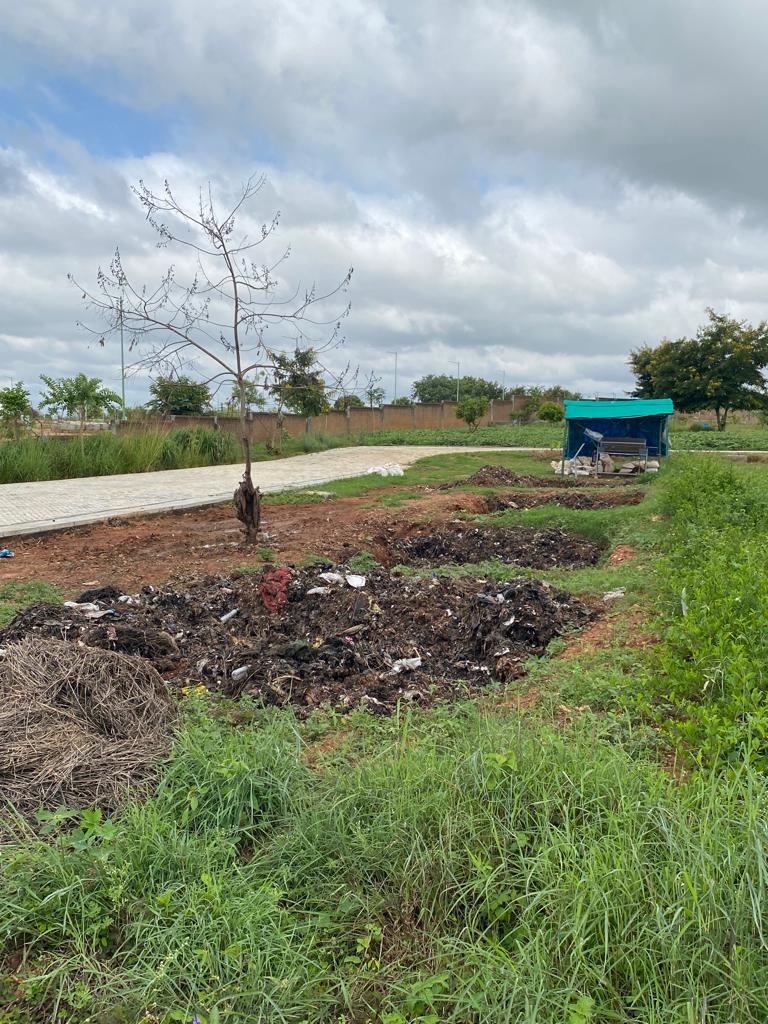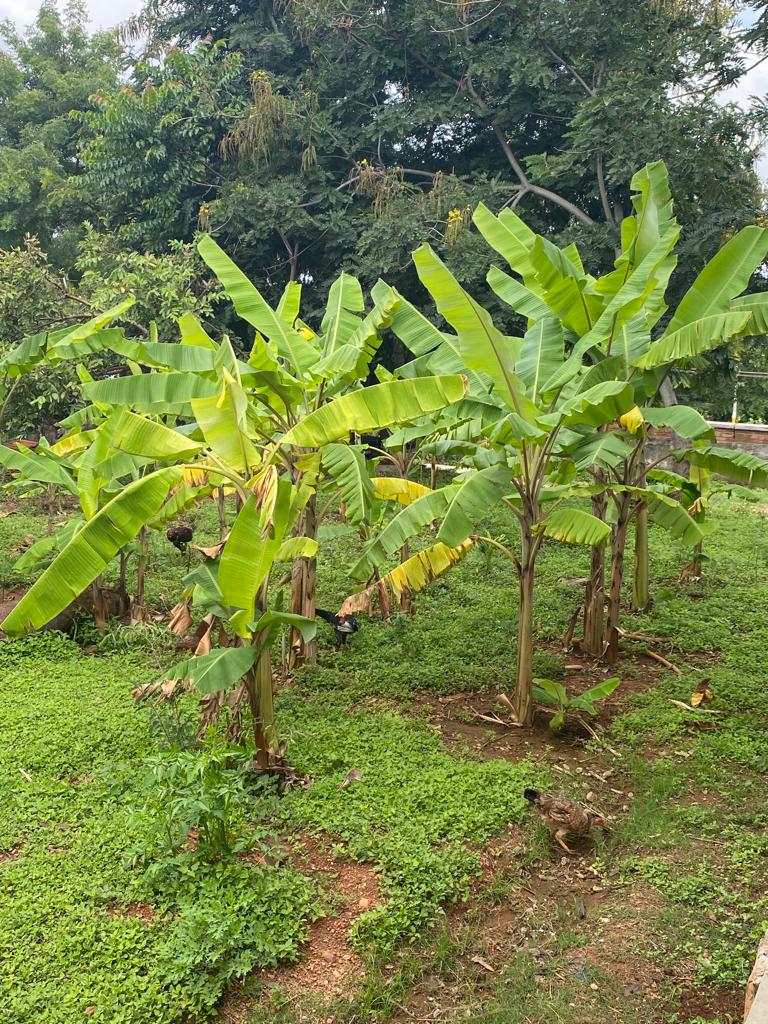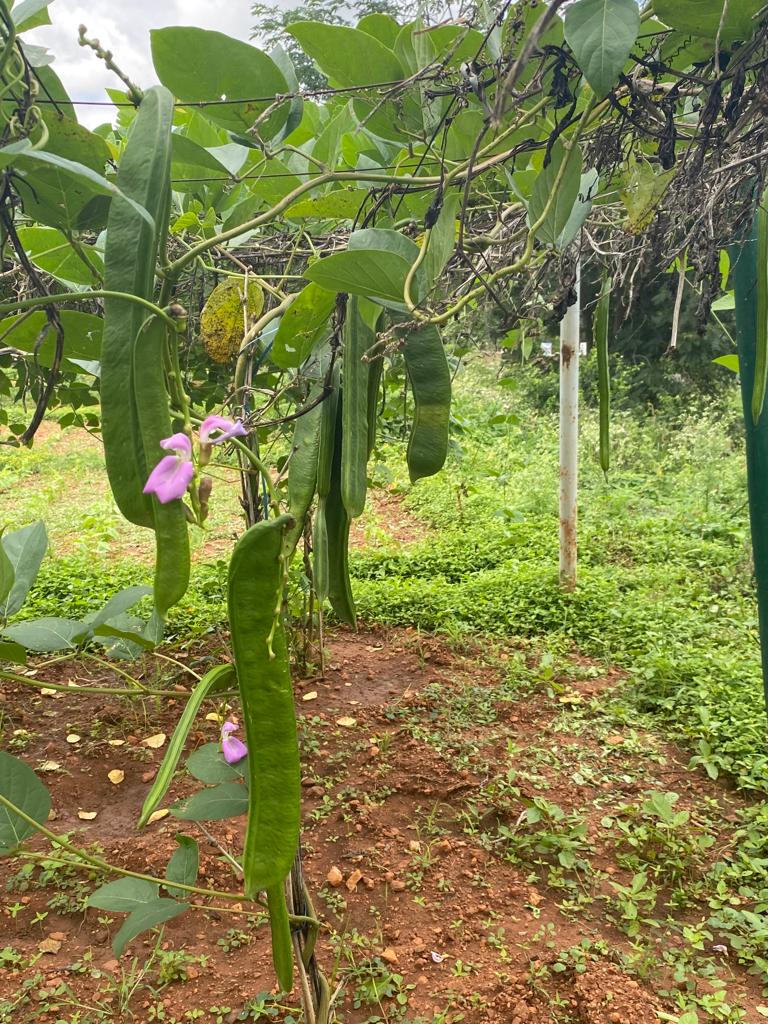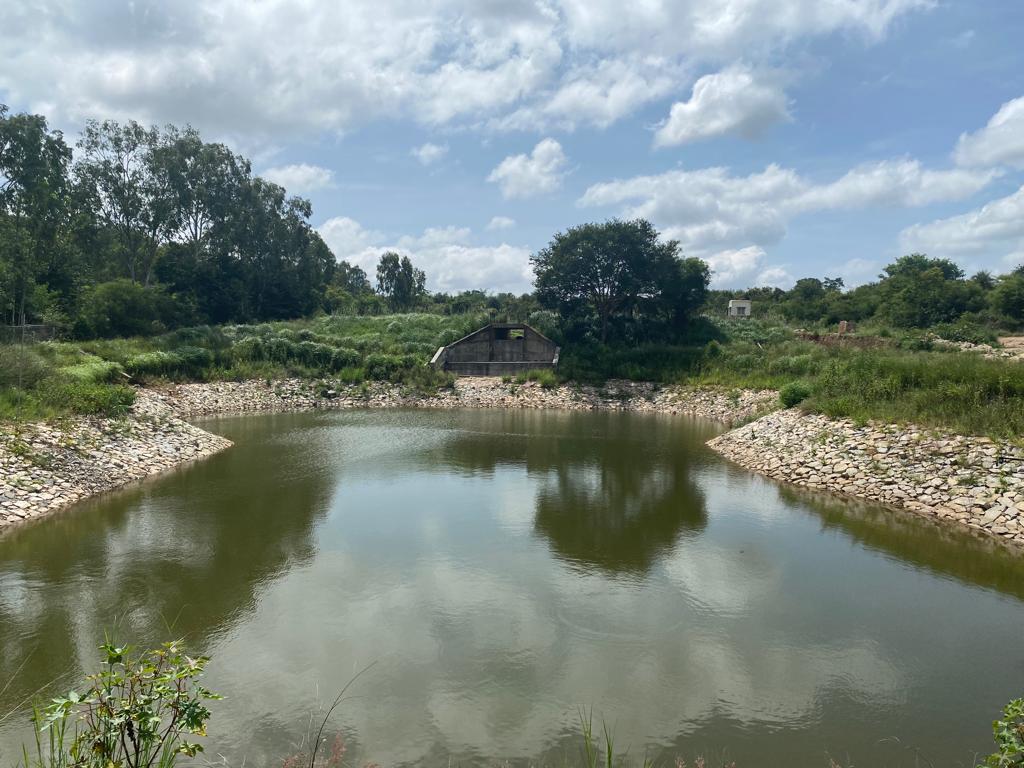By Belen Fodde, 25/8/2023.
On July 15th, I had the opportunity to visit the upcoming campus of the Indian Institute for Human Settlements (IIHS) in Kengeri, 45 minutes away from Bangalore City center and their current City Campus. Aromar Revi, Director of IIHS, insisted on me visiting the campus and I have to say it was an incredible experience. The campus, at its current state, is a promising lab where s initiatives towards integrating various systems take place, contributing to research and the discussion of policies for sustainable and resilient cities.
While still going through the first stages of construction, the campus has just one building that they call Experimental Building, and progress is being made towards getting the necessary service infrastructure in place. The whole master plan for IIHS campus projects the construction of several buildings to host classes, residences, labs, meeting halls, among other communal spaces. It also delimits space for sports and recreation. It is a very impressive project to be developed in the upcoming years.
But besides the hard infrastructure projected, in my opinion the richness of the process of this campus relies on the IIHS researchers and staff initiatives to use the campus as a lab to experiment and think of new strategies to plan and manage our cities. The campus is not only expected to be an impressive and beautiful space, but it also is a real-life setting. The campus hosts research that can promote innovative and sustainable initiatives for Indian farmers as well as for Global South countries and cities willing to rethink modes of production. And these are some of the ways in which they do it:
1. The master plan identifies areas for the growth and production of crops. This means that, when buildings are built and inhabited, plots of lands will be able to still grow and collect food. There are currently three main plots of land identified to grow different types of millets, rice, and plants that act as natural pesticides. The results observed from these practices are part of research projects, as IIHS researchers monitor how these crops work and what are the effects of different types of soil and input used. The final project will not include all the available plots that are currently under farming, and this is because some of the available land will be used to settle the necessary buildings. Still, it is a priority of IIHS to keep areas with this purpose, to contribute to research and be part of teaching and learning, not only to their students but also to farmers from surrounding areas.
2. There is a dedicated area for composting that uses not only the waste generated on campus, but also waste generated at the local level. Through the articulation with local authorities, the campus receives trucks with food waste on a regular basis, which feeds the composting unit. The resulting enriched soil feeds not only the IIHS campus, but also the surrounding peri-urban area. About this initiative I have to say that as a New York apartment resident and composter, seeing this at a macroscale was amazing. The evolution of waste, the smell you feel in the first compost zone and the odorless last stage after the filtration of it is the encouragement needed to keep composting!

3. Besides the land plots for the growth of crops, the campus also has plots for fruit trees and vegetables: squash, different types of gourds, tomatoes, beans, lettuce, among others. Next to these plots there are hens and trees such as fig trees that also provide food. At the same time, there are plots for the growth of flowers, which contribute to pollination and the maintenance of bee colonies. Bees produce honey that is collected by workers on campus, but besides their production, they are key for biodiversity.


4. As part of the works on the campus, three water bodies are constructed. These water bodies work as water reservoirs, as they collect rainwater as well as recharge groundwater, both of which can be used to water land plots and help crops to grow. The IIHS team assesses the availability and the need of water, to be able to identify the best strategy in relation to the use of water.

5. As an alternative to traditional agriculture, IIHS is also testing techniques such as hydroponic farming. Different types of vegetables are being grown using this method, testing the composition of water used and their results.
6. Systems at IIHS campus is not only a matter of testing new and varied crops, but it also includes the development of energy alternatives, sustainable infrastructure, water and biodiversity systems that allow the development of all these activities. This is why several solar panels were installed, allowing for the contribution of solar energy to the operations.
7. None of this would be possible without a laboratory and scientists testing every single element involved in these practices. Samples of water and soil are collected and tested to track the different strategies put into place and contribute to scientific research while improving the experiments done on the ground.
As seen, the IIHS campus has an extensive and comprehensive set of practices that range from what to grow, how to grow it, and how to get the necessary resources such as water and energy to do so. This is one of the main features of this initiative: the capacity to think beyond the production of food but to focus on the whole system. And as part of this cosmovision, IIHS has developed a sustainable cooking manual where they included traditional recipes of Indian cuisine adapted to different types of crops, offering gluten free options as well as replacements to wheat or other more commonly used crops. This summer, their Urban Fellows will also have the opportunity to produce their food firsthand and then cook it– because how can we talk about peri-urban agriculture if we don’t know what entails to actually grow food to cook it later?
IIHS efforts to build this amazing place are not only a benefit for the institution itself and their future students and faculty. It is also a significant contribution to the global discussion around sustainable practices and the possibilities of experimenting on alternative food production techniques. In a moment when summits invite governments to discuss policies that consider adaptation and sustainability, the possibility of having a real laboratory in the Global South where to test and learn from is an immense opportunity.
Lastly, as no woman is an island, I would like to thank Sheetal Patil from IIHS for her willingness and kindness to show me around campus and explain all the work they are developing. I learnt a lot during this visit, and it was all because of her.
